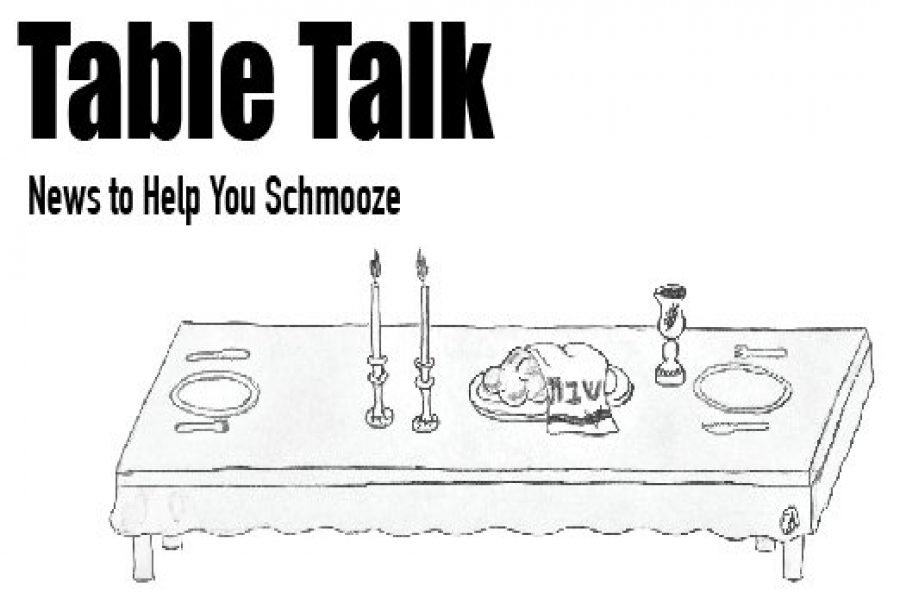TABLE TALK: Health care fight and North Korea topped news over the summer
September 18, 2017
Health care repeal stifled after summer of effort by Republicans
The Affordable Care Act, also known as Obamacare, is proving pretty hard to repeal in Congress.
The Senate Majority Leader, Republican Mitch McConnell of Kentucky, had been working for months to repeal it and replace it with new health insurance legislation. But after delaying the Senate’s summer recess in hopes of succeeding, the effort went down to defeat when Sen. John McCain cast a no vote — joining two other Republican senators — for the so-called “skinny” repeal.
That repeal would have repealed two parts of Obamacare — including the individual mandate which required people to have health insurance or pay a tax — and left 44 million people without health insurance, according to the Congressional Budget Office.
However, the repeal was never meant to become an actual law, according to Senate Republicans. It was meant to pass the Senate in order to open up negotiations with the House, which had already approved an Obamacare repeal earlier this year.
But along with Sen. McCain, Republican Senators Lisa Murkowski of Alaska and Susan Collins of Maine, joined by all 48 Democrats, voted to defend the current law, worrying that there were insufficient protections for low-income people in their states. McCain’s vote was a surprise.
Other plans have been put forth in the Senate to partially replace Obamacare, but none have passed so far.
When it was passed, the Affordable Care Act had three main goals: to make health insurance available to more people, to expand Medicaid to more people who couldn’t afford insurance, and to support new ways medical care delivery methods to lower the cost of healthcare in general,
One of the ways it tries to do this is by requiring all Americans to have health insurance, bringing more money into the system to support those who need extensive care. The support is popular, but the mandate for everyone to buy insurance is not.
According to Forbes.com, Obamacare has provided more than 22 million previously uninsured people with insurance, including many young adults. At the same time, about 5 million have lost insurance, for a net increase of about 17 million more insured people than before the law.
A few taxes were put into place in order to fund Obamacare such as new taxes on medical devices and pharmaceutical sales. The “skinny repeal” would also have repealed those.
Premiums have risen for many people who already had coverage, partly because insurance companies have to cover people with pre-existing health conditions and partly because of uncertainty over the future of the bill. For example, if Congress votes to remove the mandate, there will be less money in the system to cover pre-existing conditions.
Some of the more popular parts of Obamacare are that women cannot be charged more than men, nobody can be denied coverage for a pre-existing health condition, and children can stay on their parents’ plans until 26.
TABLE TALK: Health care fight and North Korea topped news over the summer
U.S. and North Korea exchange threats of Armageddon
On July 4, North Korea successfully tested the Hwasong-14 ICBM, which some U.S. experts say could hit Alaska. But the tables turned on July 28, with a second test of the Hwasong 14 showing a maximum range of over 6,200 miles, meaning cities such as Los Angeles, Chicago, and New York could be within range.
North Korea, whose official name is the Democratic People’s Republic of Korea, or DPRK, already has nuclear weapons that could be dropped from a bomber, but any aircraft would likely be shot down before getting close to the U.S. mainland — which is why the regime there has focused on building an intercontinental ballistic missile, or ICBM.
Missiles are classified by their range. For example, a ‘battlefield range missile” has a range of about 124 miles, while any missile that can hit a target at a range of 3,418 miles or more is considered an ICBM.
Since the distance from North Korea to Los Angeles is about 5,800 miles, an ICBM is the regime’s only option. And now it seems that they have succeeded in designing one, a claim confirmed by the Pentagon.
President Donald Trump replied Aug. 8 at the Trump National Golf Club, saying: “North Korea best not make any more threats to the United States. They will be met with fire and fury like the world has never seen.” This left many to wonder whether war was imminent.
Though the US and other countries have tried to cripple North Korea by not buying its exports or otherwise trading with it, China, DPRK’s largest trading partner, has kept the smaller country’s economy alive. Two-way trade between North Korea and China increased to $2.55 billion in the first half of 2017.
As a result, President Trump is attempting to convince China to reduce its trade with the DPRK, because without it North Korea would lack the resources to continue its nuclear weapons program. And on Aug. 14, China announced it would stop importing North Korean coal.
But despite US negotiations and diplomatic pressure, Chinese officials apparently believe that North Korea is too vital an ally to undermine too severely. Not only does the DPRK provide a buffer zone on their border against the American ally South Korea, but if the regime in the North were to collapse, millions of refugees would flood across the Chinese border.
After President Trump’s “fire and fury” warnings, North Korea replied by threatening to attack Guam, which is both an important US military base in the Pacific and a home to over 200,000 Americans.
On Aug. 15, North Korean leader Kim Jong Un said he had opted to wait for the U.S. to make a move before acting.

